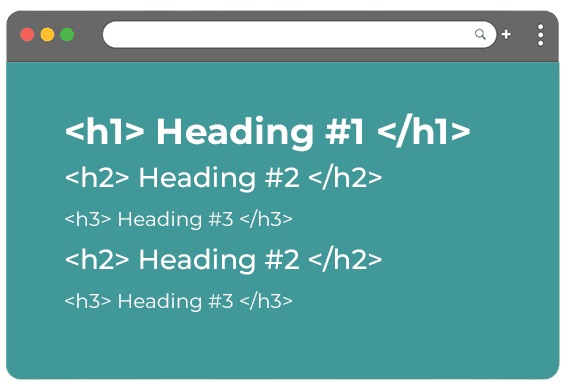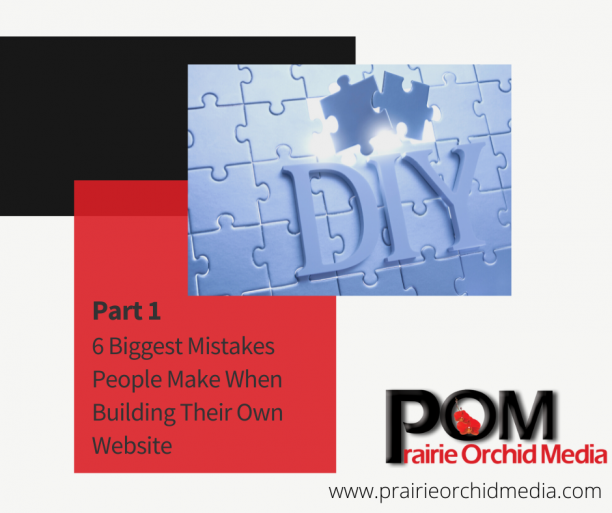Small businesses and startups may be tempted to jump on the trend of building their own DIY websites, thinking it's a cost-effective way to establish their online presence. With user-friendly website builders offering drag-and-drop features and pre-designed templates, even those with limited technical skills can create something visually appealing. However, the real challenge lies in what goes on behind the scenes – because no matter how impressive your DIY website looks, it's the hidden aspects that ultimately impact its performance. And this, in turn, directly affects the flow of traffic and number of visitors your website attracts. So let's dive into the world of SEO and website development to uncover why there's more than meets the eye when it comes to crafting an effective online platform for your business!
You don’t know what you don’t know— and like any other profession, there are many details and intricacies about building a website that you may not know how to address.
Unfortunately, these hidden details can be some of the largest factors that Google is looking at to make a determination on where to place your website in search engine results.
So I thought I would create a series for a few weeks that are on tips that may be affecting your website’s SEO. This is part 1….
1. Meta Descriptions – What are They and Why Do They Matter?
 Just under the title in your listing in search engines is a small paragraph of text— this is called a “meta description”.
Just under the title in your listing in search engines is a small paragraph of text— this is called a “meta description”.
Meta descriptions may seem like a small and insignificant part of website development, but they actually play a crucial role in improving your SEO and attracting users to click on your link in Google search results. Think of them as the little snippets that give a sneak peek into what your webpage has to offer. Crafting compelling meta descriptions is like creating an irresistible trailer for your website.
Not only do meta descriptions function as concise summaries of your content, but they also impact user engagement. If written thoughtfully, they can convince potential visitors that your page is worth their time and attention. With limited space available (usually around 155-160 characters), you need to use this opportunity wisely by incorporating relevant keywords and enticing CTAs to entice users to click on your link.
 Moreover, meta descriptions offer a chance to showcase brand personality while conveying valuable information. Injecting a sprinkle of joy or creativity in these short snippets can leave a lasting impression on users. So next time you ignore the importance of meta descriptions, remember that they hold the power to shape how people perceive and engage with the content on your website.
Moreover, meta descriptions offer a chance to showcase brand personality while conveying valuable information. Injecting a sprinkle of joy or creativity in these short snippets can leave a lasting impression on users. So next time you ignore the importance of meta descriptions, remember that they hold the power to shape how people perceive and engage with the content on your website.
The meta description should be compelling copy aimed directly at the reader— so there is no need to try and fit a bunch of keywords here. Simply give people a reason to want to visit your page to learn more.
Meta descriptions should be added to each page of your website. But you want each meta description to be unique, so avoid using the same ones over and over. Each page is different, so having the same text over and over would not describe the page correctly.
If you want to read more about how meta tags can help your website, check out our blog - Discover the Secret Weapon That Can Transform Your Website's Performance.
2. The Importance of Using Heading Tags
Headings are a great way to visually break up long bits of text on your website, but they also give importance to the words within the heading to let search engines know what your page is about.
Heading tags may seem like a small detail when it comes to website development, but their role in SEO cannot be overstated. They serve as signposts for search engines, providing valuable information about the structure and content of a webpage. Google particularly pays attention to heading tags, using them to understand the hierarchy of your page and determine its relevance to search queries.
To make the most of heading tags, it's crucial to use them strategically throughout your website. By doing so, you can guide both users and search engines through your content, making it easier for them to navigate and comprehend. This not only improves user experience but also boosts your chances of appearing higher in organic search results.
So next time you're building or updating a website, don't underestimate the power of heading tags! Implementing them correctly not only helps Google identify what's important on each page but also enhances overall usability for visitors. Ensuring that your headings are clear and informative will help both humans and search engine algorithms digest your site's content.
 Header Guidelines:
Header Guidelines:
Each page should only have one H1 tag. This should be the main topic of the page.
As the number in your tag gets higher, the importance gets lower. H1 being the most important, and H6 is the least. It’s good for your heading tags to contain keywords— but make sure they are written so that visitors understand your content first and foremost.
Include at least the H1 tag on every page of your website (but some pages will have several H2’s and H3’s (especially blog posts)). The most I have ever used in a design is H4. Usually, the H5 and H6 tags are not used.
I hope this blog has provided valuable insights into the biggest mistakes people make when building their own website. It's important to remember that even though creating a website can be a challenging task, it is also an exciting opportunity to showcase your unique brand and ideas. Don't worry if you've made any of these mistakes in the past - we're all learning and growing together! So, stay tuned for my post next week where we'll dive into the fascinating world of image sizing and alt tags. Well at least, I find them facinating. Get ready to take your website to the next level with these website tips!
Thanks for being part of the Prairie Orchid Media community, and we look forward to helping you reach your website goals this year. We offer a wide range of web development and design services to help businesses increase their web presence.
Let's chat about your business' visibility online. Give us a call or send us an email to This email address is being protected from spambots. You need JavaScript enabled to view it.



